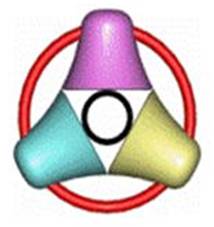Information
-
Inspection Title
-
Conducted on
-
Prepared by
-
Location
Machine Safety
-
Machine is positioned correctly?
-
Anchored to the floor?
-
Walls or fencing around machine are positioned correctly?
-
All machine guards in place? (Do the guards allow for the operator's hands, arms, or other body parts to make contact with hazardous machine parts?)
-
Are the guards effective? (Is there evidence that the guards have been tampered with or bypassed to make them ineffective?)
-
Are the guards firmly secured and not easily removed?
-
Is the machinery and work station clean and free of oils, greases and debris?
-
Light curtains in place and working correctly?
-
E-Stops working correctly?
-
Lockout / Tag out procedures and/or placards posted on the machine?
Operator Controls
-
Are starting / stopping controls within easy reach of the operator?
-
Are controls labeled to identify their function?
-
Are emergency stop controls easily accessible and clearly identified?
-
Is the machine wired so that it must be manually restarted if power is interrupted and then reapplied?
General Safeguarding Requirements
-
Are controls that require two handed activation wired to include the following: Concurrent use of both hands? Anti-repeat? Anti-hold down?
-
Can the machine be locked out at each power source?
-
Are the guards installed so that they do not create hazards such as shear or pinch points or sharp edges?
-
Are employees trained on all applicable safety procedures relating to machine operation?
-
Is all machinery and equipment kept clean and properly maintained?
-
Are previsions made to prevent machines from automatically starting when power is restored after a power failure or shut down?
Personal Protective Equipment. (PPE)
-
PPE sign posted?
-
Eye protection worn when required?
-
Face shield / Weld mask being used when required?
-
Appropriate gloves / hand protection being used when required?
-
Work boots worn by all employees (no gym shoes, sandals, bare feet)?
-
Is clothing worn in line with company dress code?
Electrical Safety
-
Electrical panels appropriately covered or our employees protected from coming within 6' of a live exposed panel?
-
Lock out / tag out procedures in place and being implemented if required?
-
Are all energized electrical components protected to reduce employee exposures (closed panels, no missing knockouts, etc.)?
Housekeeping
-
Clear access/egress to work location?
-
Are slip, trip & fall hazards in reasonable condition to minimize risk of injury?
-
Proper material storage?
-
Adequate lighting?
-
Are all personal belongings properly stored?
Fire Safety
-
Fire extinguishers present within 75 ft. Of machine operation and charged?
-
Fire extinguisher inspection tags up to date?
-
Are flammable materials stored away from potential points of ignition?
-
Is anything blocking an entrance way, fire extinguisher, or pathway?
Aisle-ways
-
Do aisles have adequate lighting?
-
Are aisles clear of debris, materials & equipment?
-
Is sufficient clearance provided around machines to allow for safe operation and material handling?
Tool Safety
-
Are tools and cords in safe condition for use?
-
Are all tool and machine guards in place and working appropriately?
-
Ground prongs in place on tools and equipment that require them?
Back Injury or Lifting Related Hazards
-
Are employees using safe lifting procedures?
-
Are material handling devices being used appropriately?
Other Employee Safety Issues
-
Any other employee safety issues that are not noted above (unsafe acts, unsafe behavior, violating co. rules, Etc.)
Other Safety Issues
-
Any other job site safety issues that are not noted above?
-
Safety Inspection Completed by John Cooley, Environmental Health and Safety Specialist for Sejong Alabama, LLC.







